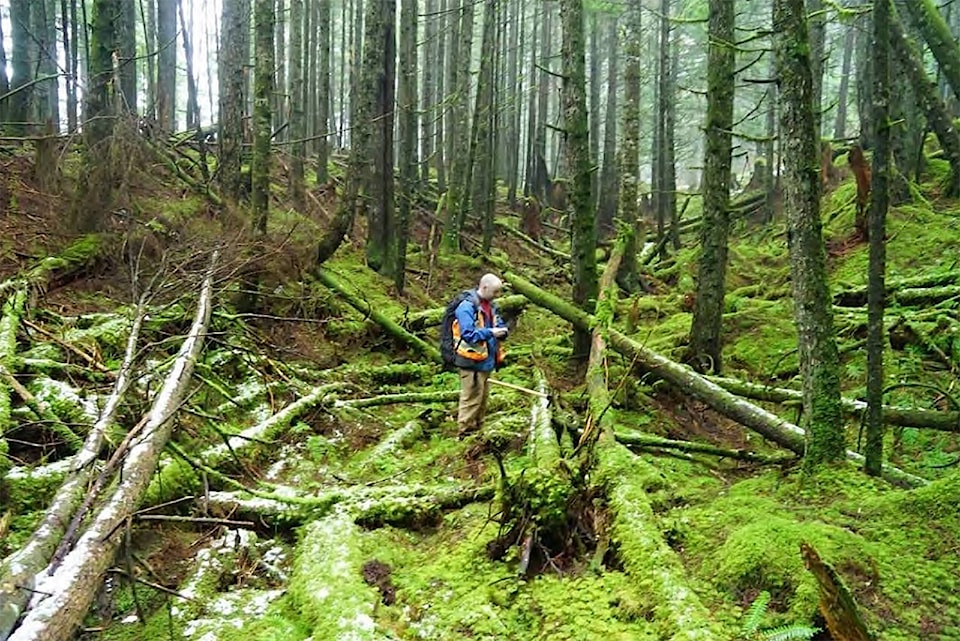The risk of a catastrophic rock avalanche coming down the mountain on the Bridal Falls area is extremely minimal, but officials have determined it does exist.
And while a risk of one in 10,000 years means 99.99 per cent of the time, a rock avalanche will not occur, the risk is a threshold that means further housing development in that area of the Fraser Valley Regional District (FVRD) is unlikely.
As part of the FVRD Official Community Plan update, geoscientists assessed the hazard risks in Bridal Falls. An initial study found something that warranted further in-depth study.
What the geoscientists found in the area – referred to as Timber Camp Linears – was a possible “large scale slope deformation” possibly indicative of future rock avalanche, “however none suggest imminent slope collapse.”
The are in question is in the mountain to the east of Mount Cheam above Bridal Falls.
FVRD chief administrative officer Paul Gipps sent a letter out on Friday to the 100-or-so residents and property owners in the area. In it, Gipps explains the rock avalanche risk discussed is not the same thing as the frequent debris flows (mud, branches, small rocks) from slopes in the area after excessive rainfalls.
“In contrast, rock avalanches are very large, fast moving landslides involving large fragments of broken rock,” Gipps wrote. “They are infrequent, rare occurrences that can cause a lot of damage.”
Even technical experts have a hard time identifying the cause of rock avalanches, but engineers point to a number of factors.
“Steep slopes, bedrock weaknesses, water pressure, frost weathering, and earthquakes are the common causes of these rare and infrequent events.”
So is the public at risk? The FVRD says no.
“It is very important to understand, there is nothing in the engineering report to suggest the public is at risk,” spokesperson Jennifer Kinneman said. “The chance of the Fraser River flooding in the next 50 years in a catastrophic way is greater than this happening.”
Indeed, Gipps laid out the statistics in his letter to property owners.
“In other words, 99.99 per cent of the time, a rock avalanche will not occur. To put this into perspective, there is a 22 per cent chance that the Fraser River will experience a catastrophic flood in the next 50 years. And, some experts predict that there is a one in four chance that the Lower Mainland will have a major earthquake within the next 50 years. In this case, engineers have calculated that there is a 99.5 per cent chance that a rock avalanche will not occur in the next 500 years.”
Still, floods can be prevented to some degree with diking, and future construction can help prevent against flood damage with construction guidelines. While the risk is minimal, little could be done to prevent the catastrophic damage if a rock avalanche did occur, so for that reason future subdivisions of property are out of the FVRD’s hands.
Residents who want to build a shed or even a new home on an existing property will still go through the same process as before, that is, fill out applications at the FVRD. But Provincial Approving Officers have jurisdiction for subdivisions in regional districts, and this one-in-10,000 rock avalanche risk is now on their radar. Any subdivision application would have to be approved with the engineering reports in mind.
Gipps’s letter to landowners is very careful to explain the extremely minimal risk of rock avalanche occurring, but quietly points out that the FVRD works to minimize risk for the community and future development will likely be directed elsewhere.
“When creating new communities or growth areas, the FVRD identifies safe areas where people and their investments (i.e. home, buisness, roads, etc.) can safely grown and prosper for generations to come.”
• RELATED: Mudslide closes Highway 1 - from November 2017
• RELATED: Trans-Canada Highway reopened after a massive mudslide a day earlier - from 2011
• RELATED: Slide puts the spotlight on hillside challenges - from 2014
@PeeJayAitch
paul.henderson@theprogress.com
Like us on Facebook and follow us on Twitter.
